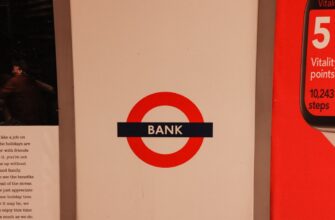Introduction
As digital currencies revolutionize finance, more people buy Bitcoin to make payment for everyday transactions. Bitcoin offers a decentralized, borderless alternative to traditional banking—cutting fees, speeding up transfers, and unlocking global commerce. This guide explores why and how to use Bitcoin for payments, where to spend it, and key tips for secure, efficient transactions.
Why Use Bitcoin for Payments?
Bitcoin payments provide unique advantages over conventional methods:
- Lower Fees: Avoid hefty bank or credit card charges, especially for international transfers.
- Speed: Transactions confirm in minutes, not days.
- Security: Blockchain technology prevents fraud and chargebacks.
- Global Access: Send/receive funds anywhere with internet, bypassing currency conversions.
- Privacy: Reduced personal data exposure compared to card payments.
How to Buy Bitcoin for Making Payments
Follow these steps to acquire Bitcoin for transactions:
- Choose a Platform: Pick a reputable exchange (e.g., Coinbase, Binance) or peer-to-peer service.
- Create & Verify Account: Sign up and complete KYC checks with ID proof.
- Deposit Funds: Add fiat currency via bank transfer, card, or other payment methods.
- Buy Bitcoin: Execute a market or limit order for your desired amount.
- Transfer to a Wallet: Move Bitcoin to a secure non-custodial wallet (e.g., Exodus, Ledger) for spending.
Where Can You Spend Bitcoin?
Bitcoin is accepted by diverse businesses worldwide:
- E-commerce: Overstock, Newegg, and Shopify stores.
- Travel: Expedia, CheapAir for flights and hotels.
- Food & Retail: Select Starbucks, Whole Foods via BitPay.
- Charities: Save the Children, Red Cross.
- Services: Microsoft, AT&T, and VPN providers.
Tips for Making Payments with Bitcoin
Optimize transactions with these best practices:
- Check Fees: Network congestion affects costs; time purchases during low-traffic periods.
- Verify Addresses: Double-check wallet IDs—transactions are irreversible.
- Use SegWit Wallets: Reduce fees with Segregated Witness-compatible wallets.
- Monitor Volatility: Spend quickly or use stablecoins if price swings concern you.
- Enable 2FA: Secure your exchange and wallet accounts.
Risks and How to Mitigate Them
While efficient, Bitcoin payments carry risks:
- Price Volatility: Bitcoin’s value can fluctuate rapidly. Solution: Use Bitcoin debit cards that convert crypto to fiat instantly.
- Security Threats: Hacks or phishing scams. Solution: Store funds in hardware wallets and avoid sharing private keys.
- Regulatory Uncertainty: Laws vary by country. Solution: Research local crypto regulations before transacting.
- Irreversible Errors: Sending to wrong addresses. Solution: Use QR codes or copy-paste with checksums.
FAQ: Buy Bitcoin to Make Payment
Q: Is it legal to buy Bitcoin for payments?
A: Yes, in most countries, but regulations differ. Check your local laws for compliance.
Q: How long do Bitcoin payments take?
A: Typically 10-30 minutes, depending on network fees and congestion.
Q: Can I get refunds for Bitcoin transactions?
A: Only if the recipient agrees—blockchain payments are final. Always trust verified merchants.
Q: What’s the minimum amount to buy Bitcoin for payments?
A: Many exchanges allow purchases as low as $10, making it accessible.
Q: Are Bitcoin payments anonymous?
A: Transactions are pseudonymous but traceable on the blockchain. For privacy, use wallets not linked to your identity.
Q: How do taxes work when spending Bitcoin?
A: In many regions, spending crypto triggers capital gains tax. Consult a tax professional for guidance.
Embracing Bitcoin for payments merges innovation with practicality. By understanding how to securely buy, store, and spend it, you unlock a faster, cheaper financial future. Start small, stay informed, and join the crypto economy today!








